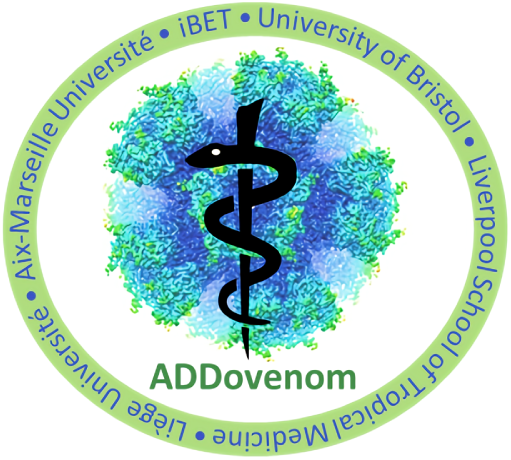Congratulations to ADDovenom team member Loïc Quinton (University of Liège), who has been awarded four years of funding by F.R.S – FNRS for the project: “Venoms4Liège: From mortal mixtures to innovative pharmacological tools: venoms as ligand providers for the promising molecular ion channels SK and HCN.”
The project aims at taking advantage of the potential of underexploited venoms to discover and characterize valuable modulators of SK (small conductance calcium-activated potassium channels) and HCN (Hyperpolarisation-activated Cyclic Nucleotide-gated channels) ion channels. These receptors are of great interest for helping with the understanding of the central nervous system functions. Indeed, the huge potential of animal venoms to provide highly selective ligands of cell receptors is not questionable, scorpions are, for example, among the most remarkable producers of toxins affecting ion channels.
In this context, VenomsForLiège proposes to investigate 40 crude venoms to discover atypical and innovative ligands for SK and HCN ion channels. The workflow will start with an MS-based fast affinity screening, to allow a rational selection of the most promising venomous species for the study. The latter will be analyzed through an integrated methodology combining sourcing of the species, transcriptomics (venom glands), proteomics (crude venoms), peptide production (recombinant synthesis, purification and folding) and electrophysiological characterization to look for highly selective ligands for SK and HCN channels. The toxin-receptor complexes will finally be modelled with the help of cryo-electron microscopy in order to understand the mechanism of action of such toxins.
The tools and methods developed for this project will be applied similarly to support the development of new peptidic compounds, but also non-peptidic ones, with potential therapeutic applications (drug design). The proposed approach combines a low-risk study, as SK modulators have already been described in bee and scorpion venoms, thus giving a high chance of success, and a more exploratory one, as HCN–selective toxins, to our knowledge, have not yet been discovered.


